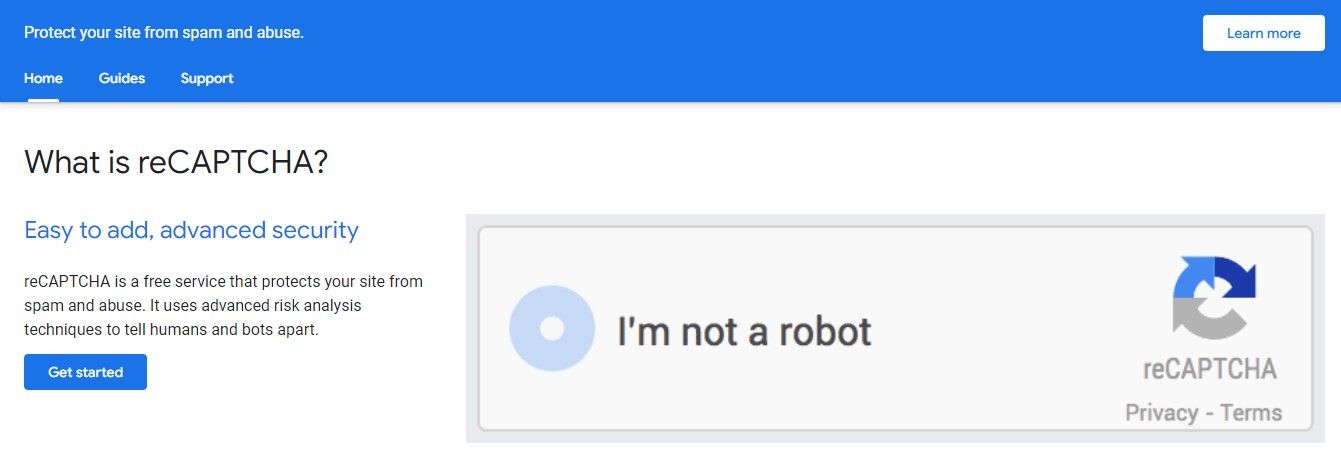Everyone has received spam. And spam bots are the greatest facilitators of junk mail online. Yes, spam is annoying, but it can also be a security threat. So what exactly are spam bots? And how can you protect against them?
What Is a Spam Bot?
A spam bot is an automated agent that spreads spam (i.e. unsolicited or irrelevant messages) to many people all over the internet. Spam is common in online forums, social media platforms, online communities, and emails. And most spam online is disseminated by bots.
When you experience the work of a spam bot, you do not communicate with a real person, even if the bot answers your requests. Instead, spam bots interact with you by sending preprogrammed messages or following preprogrammed chatting scripts.
Spammers use spam bots for various reasons, including:
- To disseminate unsolicited ads.
- Distribute malware.
- Increase the number of comments and traffic to a post.
- Carry out scams.
- Share backlinks to improve search engine ranks.
How Do Spam Bots Work?
Spam bots mimic human behavior and automatically disseminate the content assigned to them. They may create bogus accounts with numerous online platforms and service providers to complete their tasks.
When they get access to a platform, they transmit spam messages based on the spammer’s rules. Some spam bots also help spammers by accumulating email addresses, usernames, handles, or phone numbers to provide targets.
Most spam bots try to make their actions look like they came from a real user, but their disguises are rarely good enough. If you properly study the messages, you should be able to tell. So what should you look out for? There could be many grammatical errors, too many links and redirects, assertions that don’t make sense, and offers that seem too good to be true. Furthermore, most of the messages will come from unexpected or unknown sources.
Different Ways that Spam Bots Work
Several working email addresses are necessary for email spam, and spam bots are usually tasked with gathering these addresses. Spam emails are frequently sent by criminals attempting to transmit malware or steal account information via phishing attacks. These criminals may use email spoofing to make it appear as though the emails come from a legitimate source.
Spammers utilize spam bots to disseminate spam in forums or user-generated comment sections by looking for and posting in comment areas that do not require a user account. This is easier to do if the forum lacks adequate ways of determining whether a commenter is a real person, but some bots can still get through these safeguards. Spam bots can create false user accounts and write comments too; if one account is closed, they start another.
There are also a lot of spam bots on social media platforms, like Twitter, and instant messaging apps, like Telegram. These bots often send messages or make postings promising freebies, discounts on consumer products, sexual content, or other offers that appear suspicious or too good to be true. Social spam bots typically employ false accounts or genuine hijacked user accounts. A spam bot may imitate a real user’s profile picture in order to make a false social media spam bot account appear more authentic.
How Can You Stop Spam Bots?
Although spam bots are common and invasive, you can still stop them. Here are some ways to battle spam.
1. Use reCAPTCHA
This free service, designed by Google, assists you in protecting your website from spam bots. Google reCAPTCHA employs sophisticated techniques to distinguish between humans and bots. You can use it to prevent a spam bot from accessing your website, creating an account, or commenting on your posts and threads.
2. The Double Opt-In Form
It is not enough that a user has completed your online form. You should also employ the double opt-in method, instead of single opt-in, to screen out spam bots. As a result, users will have to validate their submissions or subscriptions twice; this could be via a verification link emailed to the individual filling out the form. That way, you can be sure they're not spam bots at work.
3. Filter IP Addresses
If you notice suspicious activities from an IP address, you should block or blacklist it. That way, you're protecting yourself from potential spam. Alternatively, you can limit the number of forms on your site that the same IP address can fill out.
4. Use Spam Bot Protection Software
Bot management software might assist in protecting your website from spam bots trying to wreak havoc on your brand. Such software often addresses spam activity as well as credential or email collections. They can also distinguish between bad and good bots, which is critical for businesses that use chatbots and other good bots.
The Cloudflare Bot Management system is a solid example of bot protection software.
5. Employ WHOIS Privacy Protection
Usually, contact information, such as the registrant’s mailing address, is required when registering a domain name. And this data is generally displayed in the worldwide WHOIS system. However, when you employ WHOIS domain privacy protection, your credentials are hidden from the public, protecting you from email spam bots.
Keep Spam Bots Away
Spam bots are usually malicious and widespread. As a result, we must discover new strategies to fight them, especially as they get more sophisticated. It's important to keep spam off your webpage so that your site isn't associated with malicious activity.





